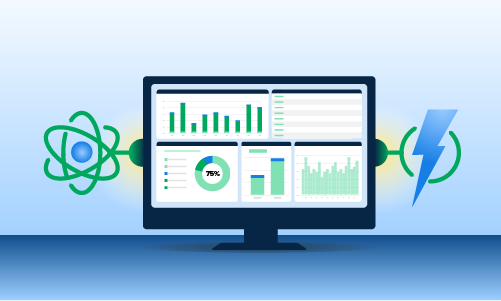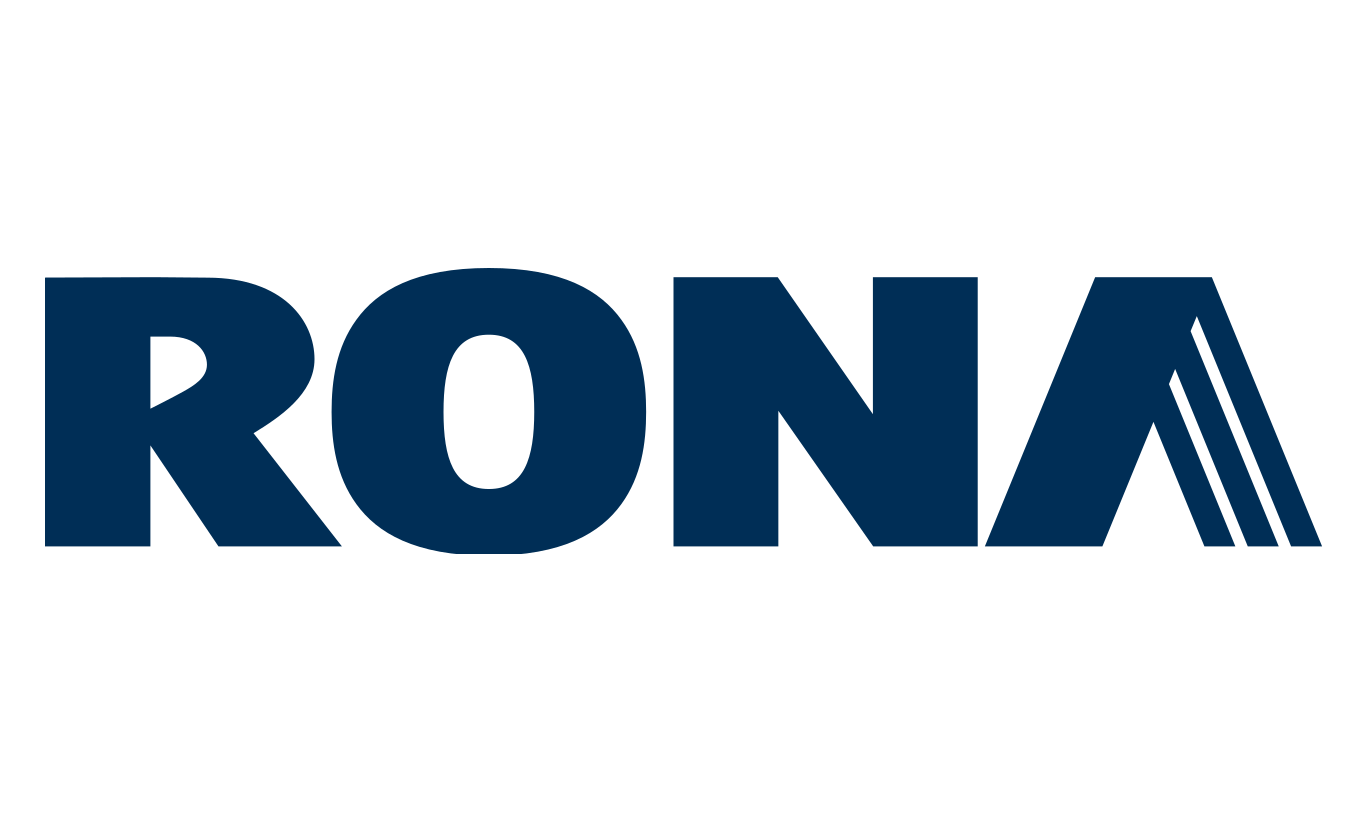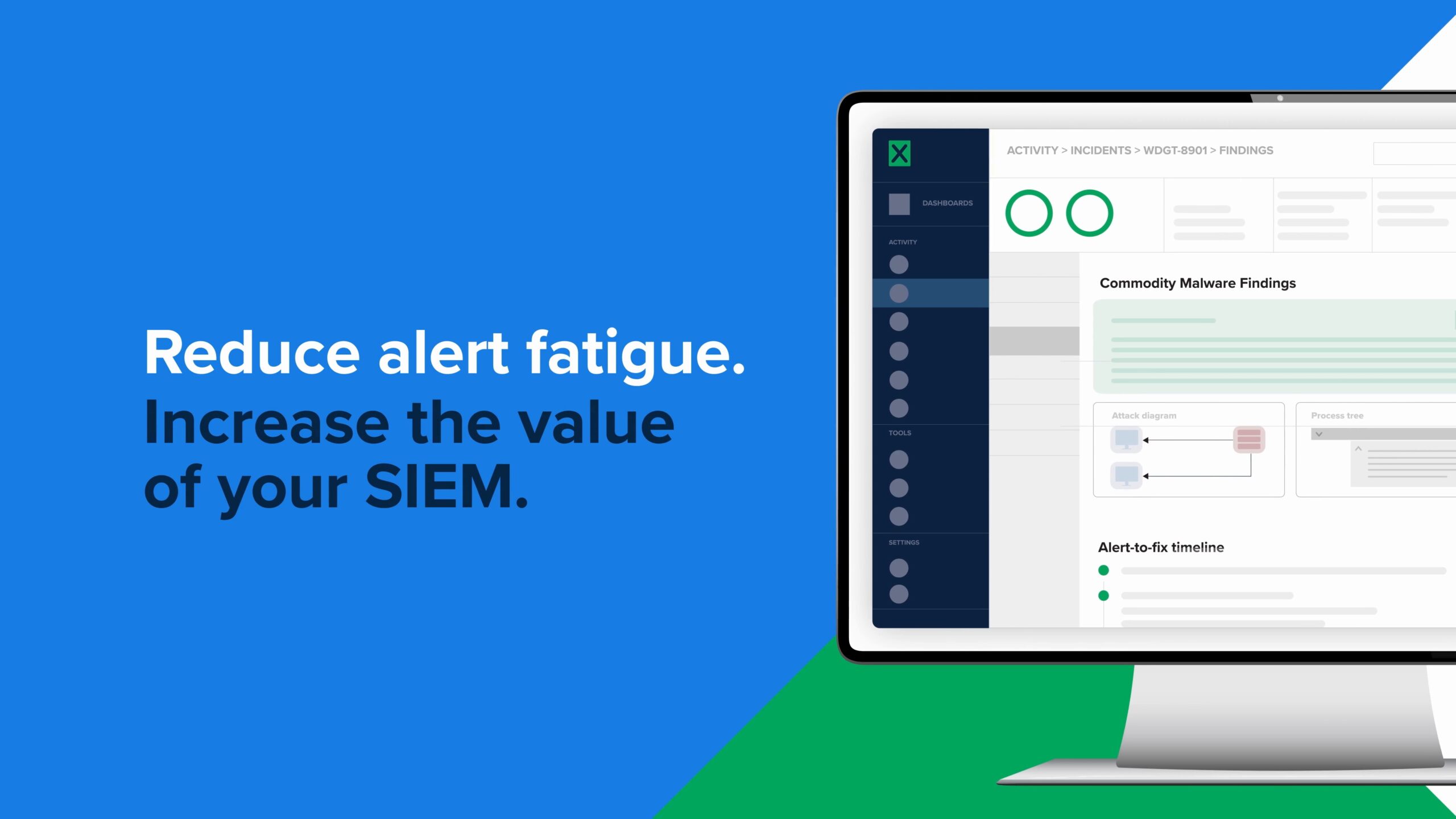Table of Contents
Security information and event management (SIEM) is a comprehensive cybersecurity solution that combines security information management (SIM) and security event management (SEM) capabilities into a unified platform.
SIEM systems act as the central hub of visibility across an organization’s security and IT infrastructure, gathering, analyzing, and correlating large volumes of log and event data from various sources across an IT environment. These include endpoints, network devices, servers, applications, and other security tools.
The SIEM platform is primarily used by security teams to identify anomalies and patterns of activity in real-time. By storing a historical record of logs and event data, security teams can better investigate and analyze the attack timeline of an incident, helping them to better identify the root cause, scope, and blast radius.
Additionally, as cyber threats become more complex and regulatory standards tighten, a SIEM platform provides a comprehensive audit trail and reporting to help organizations ensure compliance (e.g., GDPR, HIPAA, PCI DSS).
SIEM platforms can be used by security teams to gain comprehensive visibility of an organization’s security status by collecting and analyzing data from various sources such as network devices, servers, applications, and security tools. As cyber threats become more complex and regulatory standards tighten, this centralized approach to security monitoring and management has become essential.
Why SIEM matters
Implementing SIEM solutions has become essential for organizations dealing with ever-changing security threats and regulatory demands. These systems provide real-time visibility into the logs and events across their environment, allowing security teams to apply detections to spot and handle potential issues before they turn into major breaches. By ensuring their technology and assets are connected to their SIEM solution, companies can greatly increase their ability to investigate potential threats across their environment to understand the incident timeline, scope, and potential root cause of the incident.
Compliance requirements have become increasingly complex, with regulations like GDPR, HIPAA, and PCI DSS demanding robust security monitoring and reporting capabilities. SIEM systems provide the necessary logging, monitoring, and reporting functionalities required by these regulations, simplifying the compliance process and reducing audit complexity. Organizations can maintain detailed audit trails, generate compliance reports, and demonstrate due diligence in their security practices.
Operational efficiency gains through SIEM implementation can be substantial. By centralizing security management and automating routine tasks, organizations can reduce manual effort while improving response times to potential threats. This automation extends to log collection, analysis, and correlation, freeing security teams to focus on more strategic activities. The centralized nature of SIEM also improves visibility across the entire IT infrastructure, enabling more effective incident investigation capabilities and better decision-making.
Types of SIEM solutions
Modern SIEM solutions come in three primary deployment models, each suited to different organizational needs and constraints:
On-premises SIEM represents the traditional SIEM deployment model where organizations maintain complete control over their SIEM infrastructure. This approach offers maximum data sovereignty and customization capabilities but requires significant infrastructure investment and ongoing maintenance. Organizations choosing an on-premises deployment typically prioritize direct control over their security data and have the resources to maintain a dedicated security infrastructure.
Cloud-based SIEM provides a modern, scalable approach to security management. These solutions offer rapid deployment, automatic updates, and flexible scaling options without the overhead of managing physical infrastructure. Cloud SIEM platforms excel in providing built-in redundancy and availability while reducing the operational burden on internal teams. They’re particularly well-suited for organizations seeking to minimize capital expenditure and maintenance responsibilities.
Hybrid combines elements of both on-premises and cloud SIEM solutions to offer maximum flexibility. This approach allows organizations to maintain sensitive data on-premises while leveraging cloud capabilities for analysis and storage. Hybrid SIEM deployments can optimize costs while meeting specific compliance requirements and providing enhanced scalability options.
SIEM tools and platforms
The SIEM market offers a diverse range of tools and platforms to meet various organizational needs. Enterprise-grade solutions like Splunk Enterprise Security and Microsoft Sentinel provide comprehensive security monitoring and advanced analytics capabilities suitable for large organizations. These platforms offer extensive customization options, robust scalability, and integration with a wide range of security tools and data sources.
Mid-market solutions such as Devo and Datadog strike a balance between functionality and complexity, making them suitable for medium-sized organizations. These tools often provide pre-configured dashboards, built-in compliance reporting, and streamlined deployment options while maintaining essential SIEM capabilities.
Open-source alternatives like ELK Stack (Elasticsearch, Logstash, and Kibana) offer flexibility and cost-effectiveness for organizations with strong technical expertise. These tools need more setup and maintenance, but they can control the SIEM environment completely. They can also be changed to meet specific company needs.
Popular SIEM tools distinguish themselves through several key features:
Real-time analysis and response
Modern SIEM tools provide immediate threat detection and automated response capabilities. They leverage machine learning and behavioral analytics to identify potential security incidents quickly and can initiate automated responses based on predefined playbooks.
Threat intelligence integration
Leading SIEM platforms incorporate threat intelligence feeds to enhance detection capabilities. This integration helps organizations stay ahead of emerging threats by providing context and indicators of compromise (IOCs) from global security research.
Compliance reporting
Enterprise SIEM tools include pre-built compliance reports and frameworks for major regulatory standards. These features simplify audit processes and help organizations maintain continuous compliance with relevant regulations.
SIEM architecture and components
A robust SIEM architecture consists of several key components working in concert to provide comprehensive security monitoring and management:
Log collection and aggregation serves as the foundation of SIEM functionality. The system ingests data from various sources, normalizes formats, and prepares information for analysis. This process involves collecting raw logs from network devices, security appliances, operating systems, and applications across the organization. The SIEM platform must handle high-volume data ingestion while maintaining data integrity and ensuring proper categorization.
Security analytics represents the intelligence core of SIEM systems. Advanced analysis capabilities leverage machine learning algorithms, behavioral analytics, and threat intelligence to identify potential security incidents. These analytics engines process normalized data to detect patterns, anomalies, and potential threats in real-time. The system correlates events across multiple data sources to provide context and identify sophisticated attack patterns that might otherwise go unnoticed.
Alert management ensures that security teams receive timely, actionable information about potential threats. Modern SIEM platforms employ sophisticated alerting mechanisms that reduce false positives and provide contextual information for rapid response. Alert prioritization helps security teams focus on the most critical issues, while automated response capabilities can address routine incidents without human intervention.
SIEM implementation strategies
Successful SIEM deployment requires careful planning and execution across multiple phases. Organizations must begin with a comprehensive requirements assessment that considers both technical and business needs. This includes evaluating compliance mandates, security objectives, resource constraints, and performance requirements.
Integration planning demands particular attention, as SIEM effectiveness depends heavily on proper data source integration and configuration. Organizations must carefully map data sources, review network architecture, and plan for adequate bandwidth and storage capacity. Authentication integration and access control implementation ensure proper system security while enabling appropriate user access.
Optimization and tuning represent ongoing processes crucial for maintaining SIEM effectiveness. Regular review and refinement of detection rules, alert thresholds, and workflow processes help maximize system value while reducing false positives and operational overhead. This continuous improvement process should incorporate user feedback and adapt to emerging threats and changing business requirements.
Future of SIEM technology
The SIEM landscape is constantly evolving with the emergence of new technologies and threats. Advanced analytics and artificial intelligence are playing a growing role in SIEM capabilities, enhancing sophisticated threat detection and automated response options. Machine learning algorithms boost detection accuracy and minimize false positives, while predictive analytics assist organizations in anticipating and preventing potential security incidents.
Cloud-native capabilities are reshaping SIEM architecture and deployment options. Modern SIEM platforms leverage containerization, microservices, and serverless computing to provide enhanced scalability and flexibility. These technological advances enable better integration with cloud services and improved support for distributed environments.
Alternatives to SIEM
While SIEM systems offer comprehensive security management, alternative approaches may better suit certain organizations.
Some organizations have started transitioning from SIEM systems as their primary place to store and analyze security data, to using a security data lake (SDL). SDLs can offer more flexibility, scalability, and cheaper ingestion and storage costs for large volumes of security data, both structured or unstructured, while maintaining the historical record of log and event data required for compliance. SDLs can also augment SIEMs by serving as a centralized data repository that cleanses, standardizes, and enriches security data before SIEM ingestion. This improves data quality and simplifies integration by providing a single source of truth that handles multiple data formats and sources.
In addition, some security teams leverage products like Cribl to fine-tune the routing of data—sending some of it to a SIEM and some to a data lake to offset costs.
Extended detection and response (XDR) solutions offer unified security platforms that integrate endpoint protection, network security, and threat intelligence. These alternatives may complement or replace traditional SIEM functionality depending on organizational needs and resources related to detection and response use cases.
Teams that don’t have the right people or skills to manage their own SIEM often use managed detection and response (MDR) service providers, managed security service providers (MSSPs), or co-managed SIEM service providers to outsource SIEM management. These vendors also usually provide 24×7 monitoring and expert analysis.
Conclusion
SIEM solutions continue to evolve as essential components of modern cybersecurity strategies. Their ability to provide comprehensive security monitoring, analysis, and response capabilities makes them invaluable for organizations facing increasingly sophisticated cyber threats. Success with SIEM requires careful planning, ongoing optimization, and a clear understanding of organizational security requirements and objectives.
As threats become more complex and regulatory requirements more stringent, SIEM platforms will continue to adapt and improve, incorporating new technologies and capabilities to better protect organizations. The future of SIEM lies in its ability to leverage advanced analytics, artificial intelligence, and automation while providing the flexibility and scalability needed to address emerging security challenges.




